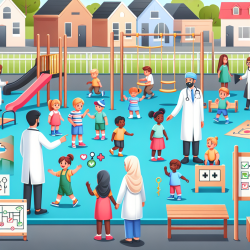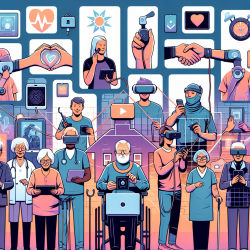Introduction
In the realm of speech-language pathology and education, fostering skills that align with global health and social justice can significantly enhance the outcomes for young learners. The research article titled "Engaging youth in global health and social justice: a decade of experience teaching a high school summer course" by Wipfli and Withers provides a comprehensive overview of how global health education can be effectively integrated into high school programs. This blog post aims to distill key findings from the research and offer actionable insights for practitioners in the field of speech-language pathology and online therapy services.
Research Highlights
The study conducted by Wipfli and Withers at the University of Southern California (USC) highlights the success of a summer course designed to introduce high school students to global health and social justice. The course has been praised for its interdisciplinary approach, engaging curriculum, and the ability to inspire students to pursue further education and careers in global health.
Key components of the course include:
- Interactive, game-based activities that enhance engagement and learning.
- Guest speakers from diverse fields providing real-world insights.
- Focus on social justice and racial inequities in health.
- Incorporation of experiential learning and reflection opportunities.
Implications for Practitioners
For practitioners in speech-language pathology and online therapy services, integrating elements of global health education can be transformative. Here are some strategies to consider:
- Incorporate Interdisciplinary Learning: Design curricula that draw from various disciplines such as psychology, sociology, and public health to provide a holistic learning experience.
- Emphasize Social Justice: Address topics related to social justice and health disparities, encouraging students to think critically about these issues.
- Utilize Interactive Tools: Use game-based learning and simulations to make sessions more engaging and relatable for students.
- Invite Guest Speakers: Bring in professionals from different fields to share their experiences and career paths, broadening students' perspectives.
- Foster Reflective Learning: Encourage students to reflect on their learning experiences and how they can apply them in real-world contexts.
Encouraging Further Research
While the USC course has demonstrated success, there is always room for further research and innovation. Practitioners are encouraged to explore additional methods of integrating global health education into their programs. Consider conducting longitudinal studies to assess the long-term impact of such educational interventions on students' career choices and societal contributions.
Conclusion
Integrating global health education into high school programs offers a unique opportunity to inspire the next generation of health professionals. By adopting the strategies highlighted in the research, practitioners can enhance their educational offerings and contribute to a more informed and socially conscious youth.
To read the original research paper, please follow this link: Engaging youth in global health and social justice: a decade of experience teaching a high school summer course.










